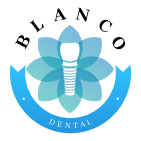5 common problems when wearing braces
Demineralization
This occurs when food particles remain on the teeth. This creates ideal conditions for bacteria to multiply and convert food remnants into acids. These acids erode tooth enamel by leaching out calcium and phosphates. If this process is not stopped with regular brushing, "white spots" can form around the braces on the enamel. These white streaks remain even after the braces are removed and are permanent and sensitive. To avoid demineralization, it’s essential to take good care of your teeth: brush them after every meal, floss daily, and avoid sugary and sticky foods.
Gingivitis
This is inflammation of the gums around a tooth, which can lead to periodontitis, a disease in which the tooth loses its support. With gingivitis, the gums become red, swollen, and may bleed during brushing. Gingivitis is reversible, but if left untreated, it can cause serious problems and even tooth loss. Cleaning between the teeth and around the braces can be challenging, but this should not be an excuse to skip the procedure. Regular flossing and tooth brushing are key measures to prevent gum inflammation.
Tooth Sensitivity
This is characterized by sharp pain when consuming hot or cold foods. It occurs when the protective enamel layer wears away, exposing sensitive areas of the tooth. This is most often the result of aggressive brushing or improperly chosen hygiene products, such as cheap abrasives (chalk, baking soda), plant enzymes (papain, bromelain), or a hard toothbrush. Orthodontists usually recommend suitable hygiene products before starting treatment, but if you experience discomfort, consult for advice on selecting products that can help reduce sensitivity.
Plaque
This is a thin, sticky film of bacteria on the surface of the teeth, formed from saliva and food residues. Bacteria in plaque, when combined with sugar, produce acids that erode enamel and cause cavities. If plaque is not removed with regular brushing, flossing, and professional cleanings, it turns into tartar. Tartar can change the color of the teeth, trap plaque, cause gum inflammation, loosen teeth, and lead to tooth loss. Tartar cannot be removed on your own; a dental hygienist’s help is needed. Professional cleaning allows for the complete removal of plaque and tartar. Children with braces are prone to tartar buildup because it’s hard to clean all the hard-to-reach spots. Regular brushing after meals and daily flossing are important measures to reduce the risk of complications.
Water Flosser for Braces
This is an effective tool for removing plaque and food particles that remain even after brushing. Research shows that tartar often forms on the inner side of lower incisors and the outer side of upper molars. Plaque also remains on the lingual surface of lower molars. A water flosser is a hydro-massager that sprays powerful jets of warm liquid into the mouth, cleaning hard-to-reach areas. The pressure in the flosser is adjustable from two to ten atmospheres and can be pulsating or continuous. Using a water flosser effectively removes food debris and massages the gums, improving blood circulation. This is particularly beneficial for those wearing braces. You can use regular water or special solutions with various effects in the flosser.
Living with Braces requires extra attention to oral hygiene. If you have just gotten braces or are planning to, you will need to be more diligent about keeping your teeth clean. But the results are worth it: a beautiful smile, straight teeth, and a reduced risk of gum and tooth diseases.
What Can You Eat with Braces?
In the first few weeks after getting braces, stick to soft foods. Once any pain subsides, your diet can become more varied. To avoid breaking the braces, avoid the following foods:
- Hard-to-chew: bagels, chewy candies, large pieces of meat
- Sticky: toffees, chewing gum, caramel
- Crunchy: chips, popcorn, ice pops
- Hard: nuts, candies, crackers
- Foods that require effort to bite into: apples, pears, carrots, corn on the cob
Pain and discomfort from braces can be significant at the beginning. It will take time to adjust to the new sensations, and discomfort and soreness are possible. To ease the discomfort, you can use salt rinses, pain relievers, and wax to isolate the braces. The mucous membranes of the cheeks will eventually adapt to the braces.
How to Brush Teeth with Braces?
You need to pay extra attention to the cleanliness of your teeth, as food accumulates under the wires and between the teeth. Use specially designed orthodontic brushes, interdental brushes, and super floss for braces and retainers. Brush your teeth after every meal and rinse your mouth with a mouthwash. For flossing, use super floss with a floss threader, which is easier to thread through the metal wire. Carry floss with you to be able to clean your teeth throughout the day. This will help maintain a dazzling smile and keep you feeling confident.


